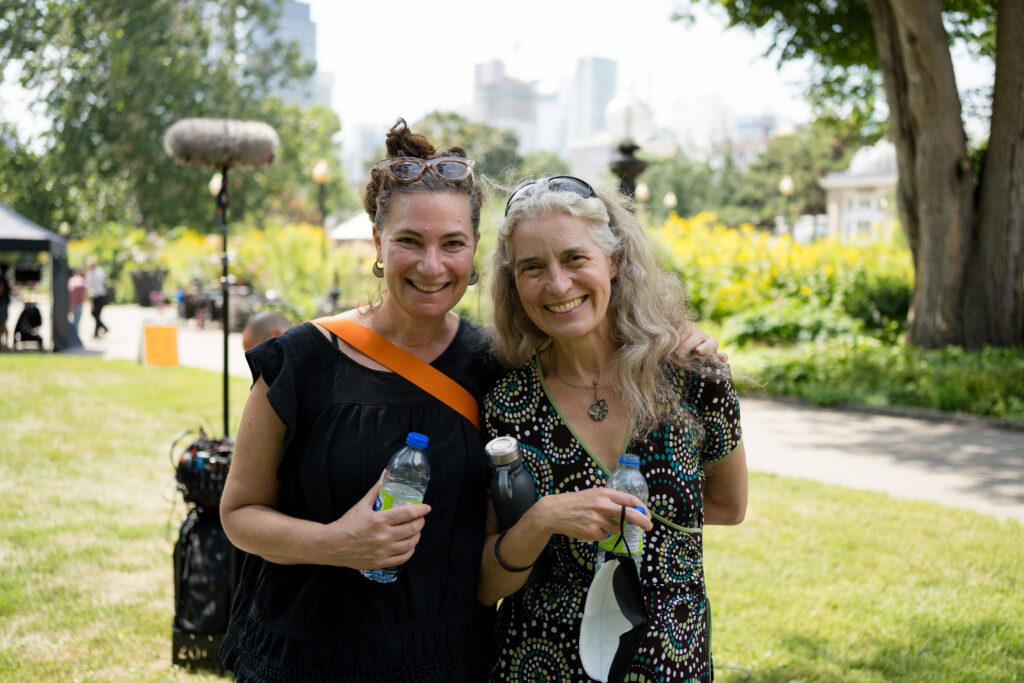
Listen to the whole story here:
15 years after acquiring rights for the story, Naomi Jaye, a TMU film lecturer, is celebrating the theatrical release of her film Darkest Miriam. The film is an adaptation of the Canadian novel The Incident Report by Martha Baillie.
The film premiered to a sold-out audience at the Canadian Film Fest on March 24, where it won the Best Feature Film award. Two days later it was also nominated for six Canadian Screen Awards, including Best Motion Picture and Achievement for Direction.
In a conversation with OTR, Jaye reflected on the creation of Darkest Miriam.
How did the idea for Darkest Miriam come about?
The film is an adaptation of Martha Baillie’s novel The Incident Report. I picked it up, read the first page, and called the publisher right away because it was love at first sight. There was something about the world this author had created and the tone of the protagonist that I just fell in love with.
There’s 144 separate incidents that relay different stories of things that happen to this librarian at work, different people that she meets, and then you start getting incident reports written about her past, her family life, and then also about a romance that she starts.
It was a really unique format that I hadn’t seen before, which I fell in love with, and the way in which the story was told as these tiny, little incidents or moments in someone’s life that ultimately make up a life. I thought it was a really compelling structure.
You spent 15 years trying to make the film exist; what made you keep pushing for it to be created?
I knew that I would make this film, I really knew for certain that I would, but I had no idea how long it would take. When you know something, it’s not that it wasn’t frustrating.
The whole process was 15 years from the day that I optioned it till the day that it was released. It’s not like I was working on it for 15 years every day, it gets put aside, comes back. There were times when there was a lot of movement around it, and there were times when nothing was happening with it.
I just knew in the back of my mind that, somehow, this would get made. If you know something, it’s not hard, but you just know it will happen.
How does it feel to be nominated for six Canadian Screen Awards?
It’s wonderful, especially after such a long journey with it. These 15 years represent a huge portion of my life. It’s nice to have it be so well received, and it’s nice to have people recognize it in that way. Very, very rewarding.
At the Canadian Film Fest you had a sold-out opening night premiere, a panel, and won the best feature film. How was that experience?
It’s such a beautiful festival, and it was just a really warm and friendly environment, filled with people who have the love of Canadian films. Of course, right now that seems really important.
It’s really important always, but especially now, with the political climate being what it is. So it was a really lovely group of people, a really engaged group of people, and very supportive environment.
You’re a lecturer at the film school here at TMU, how has your experience teaching impacted your work as a filmmaker?
When you see students work and you’re commenting on work all the time, it just makes you understand [with] complete clarity what the process is like and where things come together and where things fall apart, so you can see your own work more clearly because you’re engaging constantly with watching films and critiquing and advising.
It just makes you understand what works and what doesn’t work and how things can fall apart and how things can come together.
It’s a process, and some things come together a little bit more gracefully than others, but it is just a very difficult thing to do and the creative process is something that you just have to go through.
What do you hope people take away from viewing the film?
It’s a film that is about a woman who’s going through a very difficult time and has been living in this self-imposed prison. She’s recreated the circumstance of her father’s death and then lived inside that circumstance for a very long time.
The film speaks about things that can be very difficult. It speaks about grief, but I hope what people take away is that if you’re fortunate, life contains very difficult things and very beautiful things in the best-case scenario, in a kind of 50/50 way, but it can be very beautiful.
I hope that’s what people take away, that you can still find beauty, and you can still choose to live and engage and take a breath and move forward and live your own story and live your own experiences rather than protecting yourself too much and sitting behind a desk or not engaging with life in the world.
The interview has been edited for length and clarity.
Jasmin Murray is an exchange student from New Zealand for W2025.
This article may have been created with the use of Al software such as Google Docs, Grammarly, and/or OtterAI for transcription.
